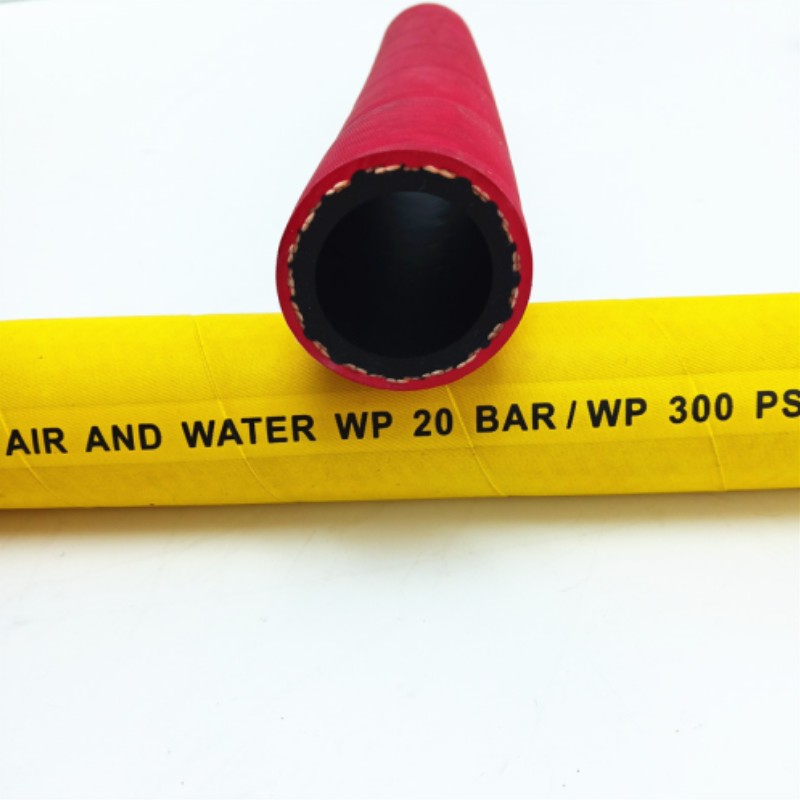Nov . 06, 2024 08:47 Back to list
Durable and Efficient Hydraulic Hoses for Extended Service Life and Performance
High-Quality Long-Working Life of Hydraulic Hoses
Hydraulic hoses are crucial components in various industrial applications, including construction, agriculture, automotive, and manufacturing. They serve as the lifelines of hydraulic systems, conveying fluids under high pressure to power machinery and equipment. Given the demanding environments in which they operate, the quality of hydraulic hoses directly influences the efficiency, safety, and longevity of the entire hydraulic system. Understanding the factors that contribute to a high-quality, long-working life for hydraulic hoses is essential for optimizing performance and minimizing downtime.
Material Selection
The quality of hydraulic hoses begins with the materials used in their construction. High-quality hoses typically feature multi-layered designs that integrate a blend of synthetic rubber, thermoplastic, and reinforcing materials such as steel wire braids or spirals. These materials are chosen for their ability to withstand extreme temperatures, pressures, and corrosive environments. For instance, hoses designed for high-pressure applications often use specific types of rubber that exhibit excellent abrasion resistance and flexibility. The inner tube’s compatibility with hydraulic fluids also plays a pivotal role, ensuring that the hose does not degrade over time.
Construction Standards
Another critical factor affecting the lifespan of hydraulic hoses is construction quality. Adhering to international standards, such as those set by the Society of Automotive Engineers (SAE) or the American National Standards Institute (ANSI), ensures that hoses meet rigorous safety and performance criteria. High-quality hoses are manufactured with precision to ensure consistent wall thickness and uniformity throughout their length. This attention to detail minimizes weaknesses that could lead to ruptures or leaks over time. Additionally, proper reinforcement techniques, such as spiraling or braiding, enhance the hose's ability to handle high pressures effectively.
Operational Conditions
high quality long-working life of hydraulic hoses

The working environment of hydraulic hoses significantly affects their durability. Factors such as temperature fluctuations, exposure to chemicals, and physical stress can accelerate wear and tear. High-quality hoses are designed to operate effectively within a specified temperature range, typically between -40°F to 212°F (-40°C to 100°C), depending on the application. Moreover, understanding the specific fluids used in the hydraulic system is essential, as certain oils and chemicals can degrade lower-quality hoses. Operators should always consult manufacturers’ specifications to ensure that the selected hose material is compatible with the intended hydraulic fluid.
Regular Maintenance and Inspection
While the initial quality of hydraulic hoses is vital, regular maintenance and inspection play critical roles in prolonging their lifespan. Operators should perform routine checks for signs of wear, such as abrasions, cracks, or bulges. Identifying potential issues early can prevent catastrophic failures and equipment damage. Additionally, hydraulic hoses should be replaced following the manufacturer's recommended intervals, even if they appear visually intact. This proactive approach is essential, especially in high-stakes industries where downtime can lead to significant financial losses.
Installation Practices
Proper installation practices also contribute to the longevity of hydraulic hoses. Using the correct fittings and ensuring appropriate bends and lengths can prevent excessive stress on the hose. It's crucial to avoid kinks and twists during installation that could compromise the hose's structural integrity. Furthermore, adequate securing of hoses will prevent them from rubbing against other surfaces, which can lead to abrasive damage over time. Training personnel on the best installation techniques can reduce the likelihood of errors that could shorten the hose's lifespan.
Conclusion
In conclusion, the high-quality and long-working life of hydraulic hoses depend on various interconnected factors, including material selection, construction standards, operational conditions, maintenance practices, and installation techniques. By investing in quality hoses and adhering to best practices in maintenance and installation, industries can significantly enhance the reliability and longevity of their hydraulic systems. This not only leads to improved operational efficiency but also ensures the safety of personnel and equipment, thereby contributing to overall productivity in demanding industrial environments.
-
Best Four Steel Wire Spiral Hose Hydraulic R12 – Durable High-Pressure Hose Manufacturer
NewsJul.08,2025
-
High-Quality 1/4 Hydraulic Hose – Soft, Flexible & Durable Rubber Hoses for Industrial Use
NewsJul.08,2025
-
1 1 2 Inch Hydraulic Flexible Hose - Durable, Reliable, High-Pressure Solutions
NewsJul.07,2025
-
High-Quality 1 2 Rubber Hose - Durable, Flexible Hydraulic Solutions
NewsJul.07,2025
-
Discover SAE Hydraulic Hose Types - High Quality & Durable Hoses from Leading Factory Supplier
NewsJul.06,2025
-
High Pressure Wire Hydraulic Rubber Hose Supplier Durable & Reliable 1SN Hose Solutions
NewsJul.06,2025
